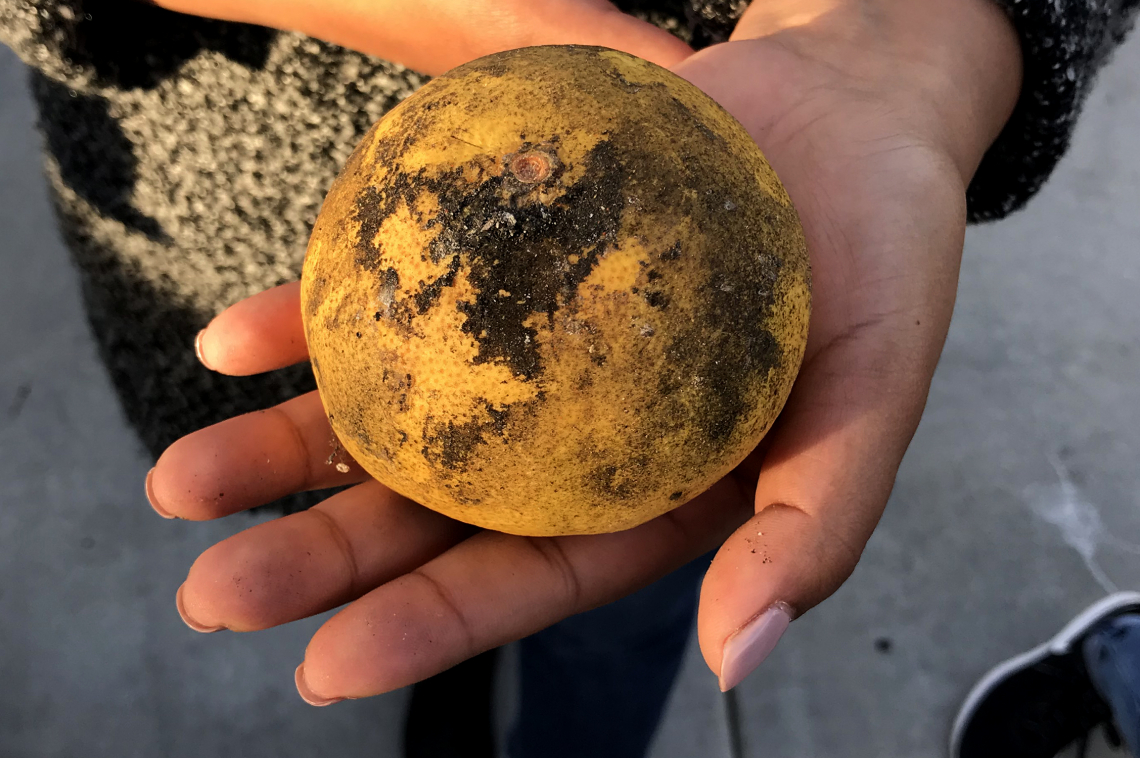
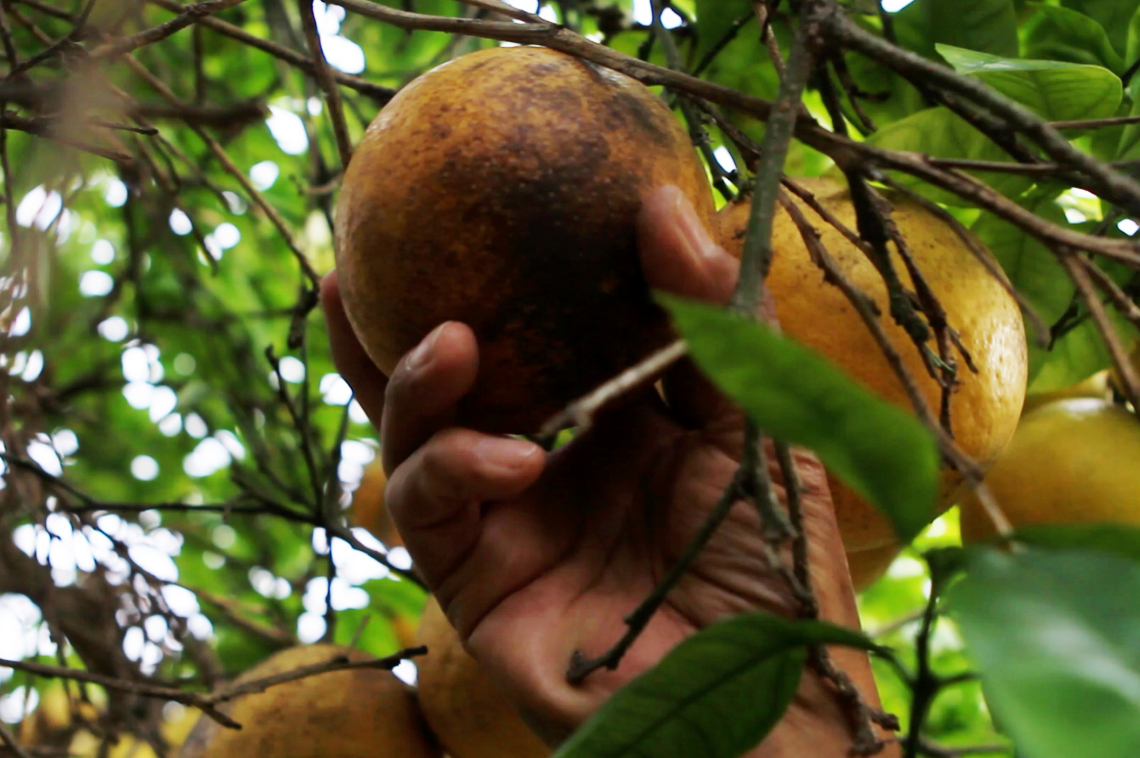
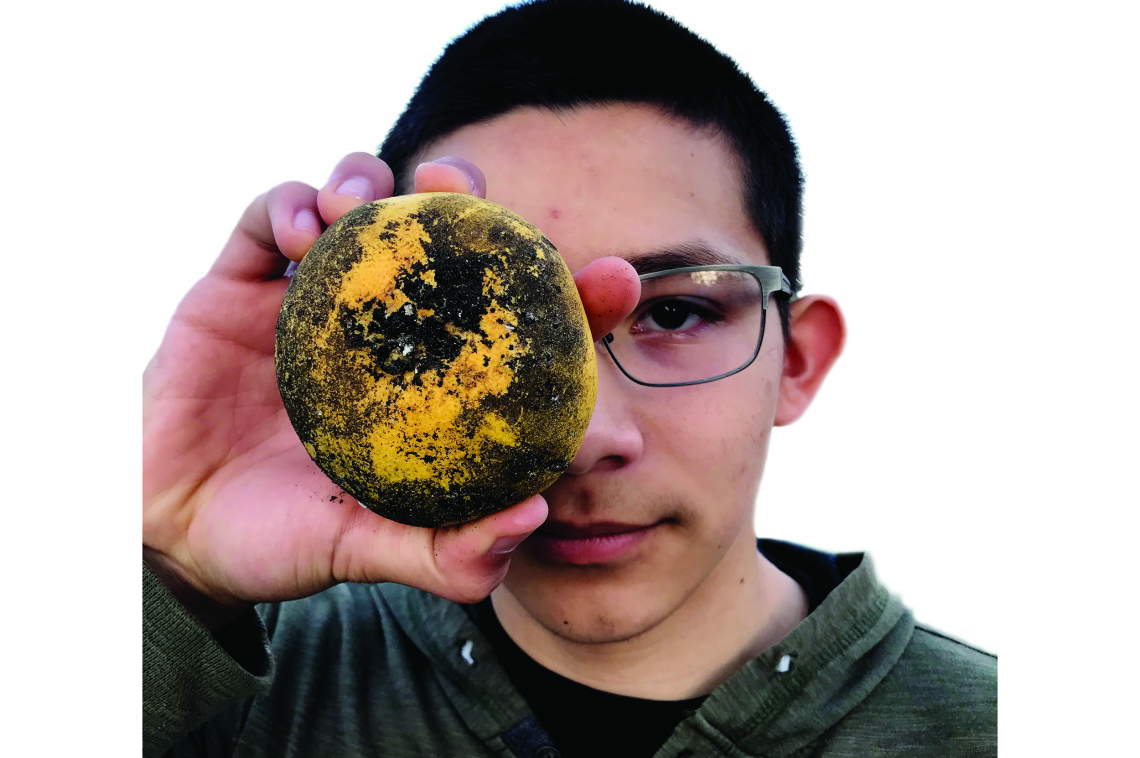
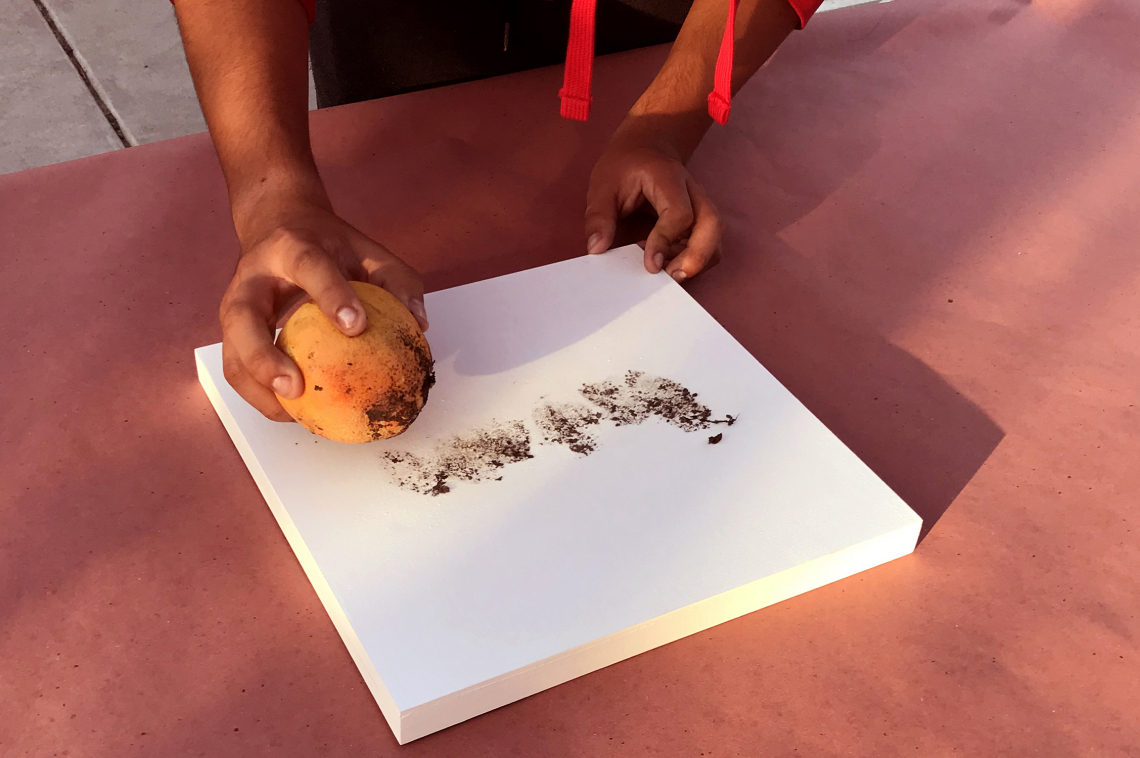
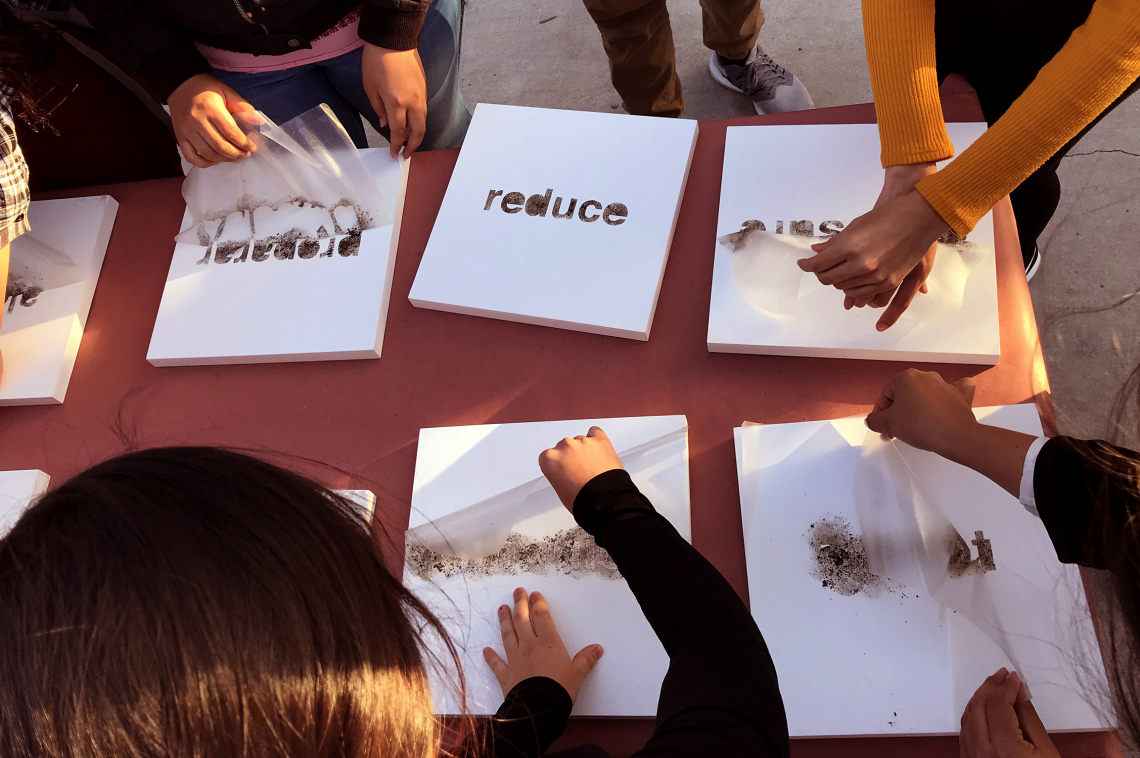
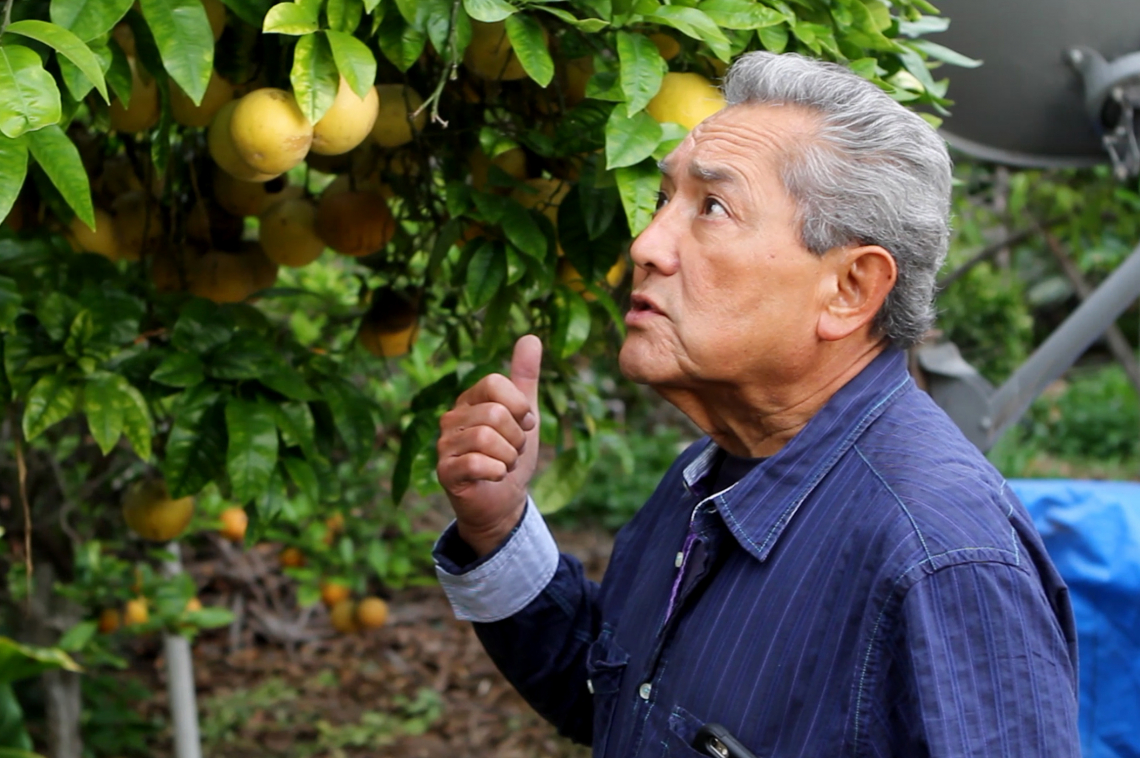
The residents of the village of San Ysidro, California, have an 18% higher rate of asthma than the rest of the county; fruit from local trees are covered in a dusty residue on a daily basis. Not many residents knew that the residue came from idling cars at the nearby México-U.S. border. Worse, the government had decided not to monitor air pollution in the area. So an artist and local youth started asking questions.
Andrew Sturm of Casa Familiar - a 2016 ArtPlace funded project transforming a historic church into a neighborhood arts incubator - takes us through how local residents leveraged the arts to make the invisible visible and take control of the narrative.
- - -
Señor Cornejo brought with him a grapefruit from one of the fifty-two fruit trees in his yard. It was covered with an oily black substance and he proceeded to pass it around to all the Apprentices and tell them about how and where he found it and what he believed about it. He shared that he is a retired engineer and has lived in the San Ysidro area since the mid-1980s. Señor Cornejo immigrated to the United States from El Salvador and growing food has been an important part of his life since he was a small child. He purchased that land, near the México-U.S. border, to build his home, because he would have room to plant trees and a large garden for his family.
We hear a lot about immigration these days but many of those stories leave out the complexities and intersecting issues that the movement of people across borders creates. This story is centered on Señor Cornejo and eleven Apprentices from the village of San Ysidro, and the art that we made together as we explored the particular complexities of the daily immigration between Tijuana and San Diego. The Apprentices are youth, ages sixteen to twenty-four, who are themselves immigrants, and/or children of immigrants, in a community that has been shaped by immigration for generations in multiple ways. The Apprentices were employed by local social service and community development agency, Casa Familiar, in a job training program where they learned how to operate Casa’s community art gallery, The Front. My role in the project was as artist/facilitator working with Casa Familiar to convene activists, scientists and residents in the exploration of a very pressing local concern, air pollution, that we learned is bound to immigration in important and complex ways.
Dr. Jenny Quintero, a researcher from San Diego State University and David Flores, the Community Development Director of Casa Familiar, told us about their ongoing efforts, with the University of Washington, to monitor and analyze the air pollution levels in San Ysidro and Tijuana near the border crossing. Casa had learned that residents of San Ysidro have an 18% higher rate of asthma than the surrounding San Diego county and wanted to find out why. When they looked at air monitoring reports they learned that no data was being collected by the County and State in the area immediately surrounding the border crossing. When they asked why no air monitors were active in the area, they were told that the poor quality of the air there would skew the data for the whole County, so it was not being included. Casa knew that without that data they could not understand or communicate the issues and would therefore have challenges bringing resources to the issue, so they took matters into their own hands.
The air monitoring data pointed to what Señor Cornejo had already surmised from the residue he found on his fruit and what he knew from his background in engineering, that the idling cars waiting at the border were a major source of the local air pollution. The San Ysidro Port of Entry is the busiest in the Western Hemisphere due to the daily immigration that happens for jobs, goods and services between Tijuana and San Diego. On any given day there are 70,000 cars, waiting on average thirty minutes to two hours, or more, to cross into the U.S. through the now intensified U.S. border security. While idling, cars emit significantly more pollution than when moving at highway speeds. The U.S. government is currently doing nothing to mitigate the pollution at its source and because San Ysidro is in a valley, the air pollution tends to settle and concentrate in the neighborhood, leading to the respiratory problems that residents are experiencing. These health challenges are expected to worsen in coming months when a new southbound inspection station comes online, effectively doubling the pollution as cars are also made to idle as they cross south, which currently does not happen in a significant way.
The Apprentices were quite taken aback by what they heard from Dr. Quintero and what they saw on Señor Cornejo’s fruit. Nine of eleven Apprentices later shared that they were not aware of the air pollution issue in San Ysidro before that day, even though many of them were aware of family and friends who suffered from respiratory issues, including some of the Apprentices themselves.
One Apprentice’s reflection on the issue poignantly summed up the task we now had in front of us:
“I think this is a very important problem because it is something that affects everyone, and it is something that we breathe every day. And if we do not know about the problem, how are we going to find out about what is affecting us? And how are we going to provide solutions?”
From that point forward our questions were clear.
How can we make the invisible, visible? How can we make air pollution tangible? How can we include the families, friends and neighbors of the Apprentices as we do this, to spread the word? How can we work in a way that gives the Apprentices ownership and agency in this process and the work that will come after, if they are willing to continue?
First we took the notes from everything we learned and we made a shared script of all the things we felt people in San Ysidro should know about the air pollution and how it would likely get worse with the coming Port of Entry expansion. We learned and practiced how to conduct interviews using mobile apps on the Apprentices’ phones for recording. Each Apprentice then shared what they had learned, with their family members and neighbors, and interviewed them about their personal experiences and thoughts about air pollution in the neighborhood. It was up to the Apprentice as to whether the interviews should be conducted in English or Spanish given the bilingual nature of the neighborhood. The Apprentices then transcribed their interviews and identified three to five themes represented by key words. Those words were then placed on notecards that covered the gallery wall. (Here again it was the Apprentice’s choice as to whether the words should be in English or Spanish.) We worked together to sort and narrow down the words until each Apprentice had a unique word that represented the themes they found most powerful:
invisible, agency, reduce, pulmones, preparar, familiar, exposure, invest, alergia, comunicar, la flora, monitor, and profit
There was one word that was not selected but stuck out because it was surprisingly the only word that appeared multiple times, soluciónes. The word also stuck out because we all remembered Señor Cornejo passionately sharing multiple solutions to how the air pollution issues could be addressed. We decided that soluciónes belonged to Señor Cornejo.
The next and last step was to make the pollution visible and call attention to it. I cut stencils for each word and then adhered them to hardboard canvases. I kept this part somewhat of a secret so that the Apprentices could be surprised, and so I could hear their reactions to what we were making with the words they chose. I then visited Señor Cornejo’s grove of trees, and with him, collected as many soiled fruits as I could. The day came for the Apprentices to make their pollution paintings, so we set up each canvas one by one and made the process into a performance. As each Apprentice tapped and rolled their polluted grapefruit on the adhesive that was shaped by the word stencil, the other ten Apprentices looked on.
They were amazed by how the pollution was sucked off the grapefruit in the process, leaving it as clean as it was before the accumulation. In interviews later one of the Apprentices recounted how they felt as they were making their pollution painting:
“I noticed how air pollution is really affecting the community and I saw that it is something that we may not think about because when I saw all the particles from the grapefruit, it made me feel it more... Made me think more about how air pollution is affecting us.”
Señor Cornejo had wanted to see the making of the pollution paintings, but he was not able to come to the gallery that day. Instead, the Apprentices decided that he should make his own Pollution Painting and that we should tell him we want his word to be soluciónes, if he agreed.
He did.
- - - -
Collaborating Artists + Apprentices: Francisco Morales, Guillermo Cornejo + Maria Fernanda Romero Alvarez, Jennifer Aragón, Ricardo Costa, Gabriela Crespo Enamorado, Priscilla Estrada, Jazmin Jauregui, Cristian Perez, Emelin Rodriguez, Helam Rueda, Gerardo Santiago, Carlo Valenzuela
- - - -
This text borrows from Andrew’s MFA thesis, Citizen Artist, 2018.
- - - -
Bio: Andrew Sturm is a visual artist and architect whose work sits at the intersection of art, urbanism and public culture. His work engages every day people in a public art practice that seeks to engage and interrogate local issues. Through this work Andrew aims to reshape our cities and public institutions into more just, equitable and interesting forms. In July of 2019 Andrew joined the staff of Casa Familiar as its new Public Vitality Facilitator, where he bridges between Casa’s social entrepreneurship, arts&culture and community development work.





